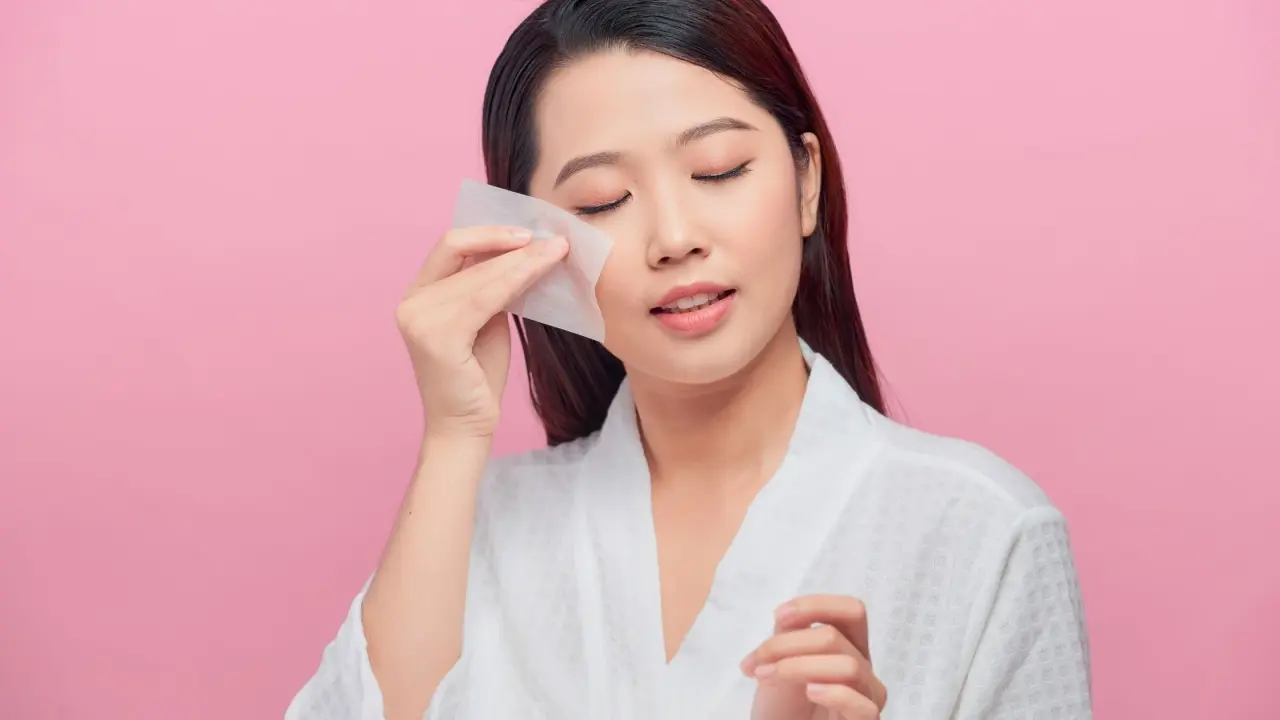Taking care of your skin isn't just about looking good; it's about maintaining the health and vitality of your largest organ. With so many products and techniques out there, it can be overwhelming to know where to start. That's why I've put together this comprehensive guide on 10 steps to get the most out of your makeup with skincare benefits. Let's dive in!
Step 1: Know Your Skin Type

How to Determine Your Skin Type
Before you start investing in skincare products, it's crucial to understand your skin type. Is your skin oily, dry, combination, or sensitive? A simple way to determine this is by washing your face, patting it dry, and waiting an hour. If your skin feels tight, you have dry skin. If it's shiny, you have oily skin. If you notice shine only on your T-zone, you have combination skin. If your skin is easily irritated, you likely have sensitive skin.
Common Skin Types and Their Characteristics
- Oily Skin: Enlarged pores, shiny complexion, prone to blackheads and pimples.
- Dry Skin: Tight, flaky, and rough texture.
- Combination Skin: Oily T-zone (forehead, nose, and chin) and dry or normal elsewhere.
- Sensitive Skin: Redness, itching, and prone to irritation and allergic reactions.
Step 2: Cleanse Properly
Choosing the Right Cleanser
Your cleanser should be gentle and suitable for your skin type. For oily skin, a foaming or gel cleanser works best. For dry skin, opt for a creamy or hydrating cleanser. Sensitive skin benefits from fragrance-free, mild cleansers.
Morning vs. Evening Cleansing
In the morning, a simple cleanse helps remove overnight sweat and oil. In the evening, it's essential to remove makeup, dirt, and pollutants accumulated throughout the day. Double cleansing, starting with an oil-based cleanser followed by a water-based one, can be particularly effective.
Step 3: Exfoliate Regularly
Benefits of Exfoliation
Exfoliation removes dead skin cells, helping to unclog pores and promote cell turnover. This process leaves your skin smoother and more radiant.
How Often to Exfoliate
Over-exfoliating can damage your skin, so it's important to find a balance. For most skin types, exfoliating 1-3 times a week is sufficient. If you have sensitive skin, once a week may be enough.
Step 4: Hydrate and Moisturize

Importance of Hydration
Hydration is key to maintaining your skin's elasticity and barrier function. Drinking enough water and using hydrating products ensures your skin stays plump and healthy.
Types of Moisturizers
Choose a moisturizer based on your skin type. Gel moisturizers work well for oily skin, while cream-based moisturizers are better for dry skin. Look for ingredients like hyaluronic acid, glycerin, and ceramides to keep your skin hydrated.
Step 5: Protect with Sunscreen
Why Sunscreen is Essential
Sunscreen protects your skin from harmful UV rays, which can cause premature aging, sunburn, and increase the risk of skin cancer. It’s an essential step in any skincare routine.
Choosing the Right SPF
For daily use, a broad-spectrum sunscreen with at least SPF 30 is recommended. If you spend a lot of time outdoors, opt for a higher SPF and reapply every two hours.
Step 6: Use Targeted Treatments
Serums and Their Benefits
Serums are concentrated formulations designed to address specific skin concerns, such as fine lines, pigmentation, and acne. They penetrate deeper than moisturizers, delivering powerful ingredients directly to your skin.
Spot Treatments
For blemishes and acne, spot treatments with ingredients like salicylic acid or benzoyl peroxide can be very effective. Apply these treatments directly to the affected area to reduce inflammation and promote healing.
Step 7: Follow a Consistent Routine
Building a Routine that Works
Consistency is key to seeing results. A typical routine includes cleansing, treating, moisturizing, and applying sunscreen. Stick to your routine daily to maximize benefits.
Morning vs. Night Routine
In the morning, focus on protection and hydration with cleanser, moisturizer, and sunscreen. At night, prioritize cleansing, treating, and moisturizing with any additional serums or treatments.
Step 8: Eat a Healthy Diet

Foods that Benefit Your Skin
What you eat impacts your skin’s health. Incorporate foods rich in antioxidants, vitamins, and omega-3 fatty acids, such as berries, nuts, and fish. These nutrients help repair and protect your skin.
Foods to Avoid
Avoid foods high in sugar, dairy, and unhealthy fats, as they can trigger inflammation and acne. Maintaining a balanced diet supports overall skin health.
Step 9: Stay Hydrated
Importance of Water for Skin Health
Water helps maintain your skin's elasticity and suppleness. Dehydration can lead to dryness and make fine lines more noticeable.
How Much Water to Drink Daily
Aim for at least eight 8-ounce glasses of water a day. Adjust your intake based on activity level and climate. Keeping a water bottle handy can help you stay hydrated throughout the day.
Step 10: Get Enough Sleep

The Connection Between Sleep and Skin Health
During sleep, your skin repairs itself. Lack of sleep can lead to dull skin, dark circles, and breakouts. Prioritizing sleep is essential for maintaining healthy skin.
Tips for Better Sleep
Establish a regular sleep schedule, create a relaxing bedtime routine, and ensure your sleeping environment is comfortable and dark. Avoid screens before bed to promote better sleep quality.
Additional Tips for Maximizing Makeup with Skincare Benefits

Avoiding Harsh Chemicals
Read product labels and avoid harsh chemicals like sulfates, parabens, and synthetic fragrances. These can irritate your skin and disrupt its natural balance.
Regular Exercise
Exercise increases blood flow, helping to nourish skin cells and keep them healthy. Aim for at least 30 minutes of moderate exercise most days of the week.
Common Skincare Mistakes to Avoid
Over-exfoliating
While exfoliation is beneficial, overdoing it can strip your skin of natural oils, leading to irritation and sensitivity. Stick to the recommended frequency for your skin type.
Skipping Sunscreen
Never skip sunscreen, even on cloudy days or when indoors near windows. UV rays can penetrate glass and cause damage over time.
Conclusion
Healthy, glowing skin is achievable with the right approach. By understanding your skin type and following these 10 steps, you can maximize your makeup with skincare benefits. Start incorporating these practices today, and your skin will thank you!
FAQs
Q. How can I determine my skin type?
Ans: To determine your skin type, wash your face, pat it dry, and observe how it feels after an hour. Tight skin indicates dryness, shine suggests oiliness, and a mix of both points to combination skin.
Q. What are the signs of over-exfoliation?
Ans: Signs of over-exfoliation include redness, irritation, dryness, and increased sensitivity. If you experience these, reduce the frequency of exfoliation and switch to gentler products.
Q. Can I use the same moisturizer for day and night?
Ans: While you can use the same moisturizer for day and night, using a lighter formula during the day and a richer one at night can provide better results, especially for different skin needs.
Q. How often should I reapply sunscreen?
Ans: Reapply sunscreen every two hours, or more often if you are swimming or sweating. This ensures continuous protection from harmful UV rays.
Q. What’s the best way to treat a sudden breakout?
Ans: For sudden breakouts, use a spot treatment with salicylic acid or benzoyl peroxide. Keep the area clean and avoid picking at it to prevent further irritation.
